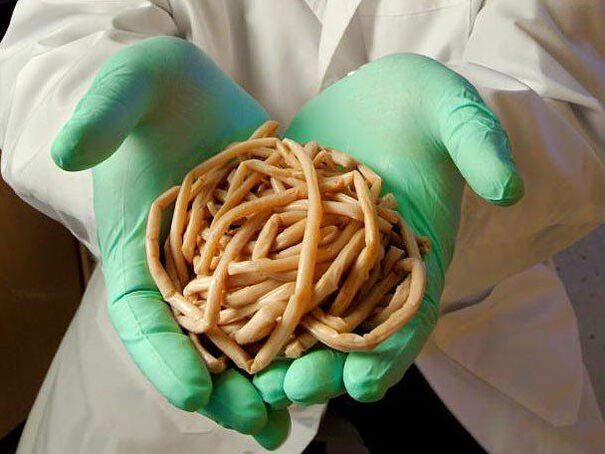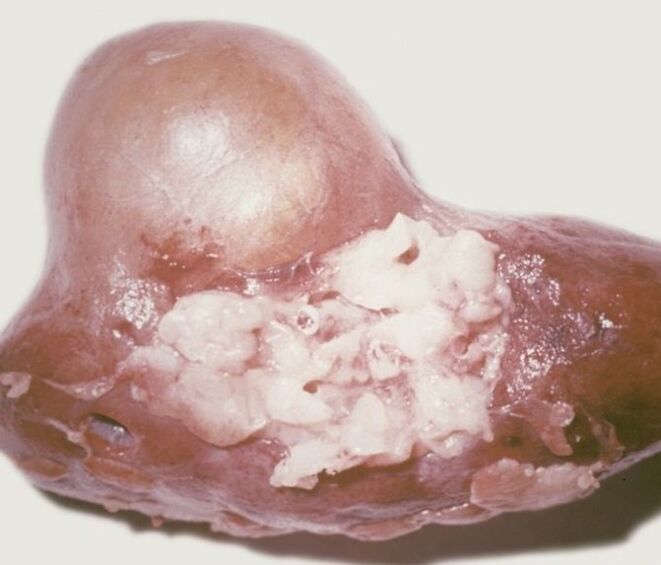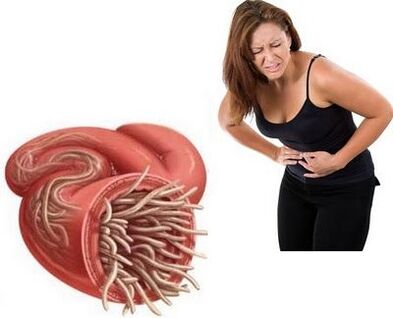Pests - this is the name of one of the most common groups of infectious diseases.Today, there are about 300 pests known, which are a risk to humans, including a lethal.On the territory of the European continent, these are only a few dozen parasites (medical name - Helminthias, helminth invasion).
Most of human pests are common in countries with a tropical and subtropical climate, as well as a low level of socio -economic development and hygiene culture.
What are the dangerous parasites

Pests in the human body can affect almost any organs system.The degree of damage depends on the type of helminth, the duration of the disease, the initial state of health.The faster the diagnosis of a specific helminth invasion, the more likely we get rid of the parasite.That is why it is important to diagnose the state of the invasion with pests and perform all stages of treatment.
Almost any variant of helminth, especially for a long time, causes significant damage to the human body.Hlybon's invasion is the reason for delaying the development of psychosocialism in children of any age, significantly reduces performance and reserves of life in an adult.
Regardless of a person's age, the helminth invasion contributes to allergification, reduces the ability of the immune system to resist significantly to infectious and other diseases, in addition, the effectiveness of continuing vaccine prophylaxis is significantly reduced.
Cleaning the body of pests in rare cases occurs spontaneously, in most cases, a special treatment is essential for this according to a particular shape.
What are parasites

Pests (also worms or worms) are an extensive group of multicellular organisms that can exist for a long time in active condition in various conditions.An important feature is the ability to exist within another living organism (person or animal), called "invasion".
At present, various types of pests in the human body are known.The most common classification of pests depending on their external structure and the characteristics of the life cycle.
Taking into account the biological features, all parasites are divided into 3 major categories:
- Round worms (they are also nematody), for example, Trichinella, Ankylostoma, PIN, Ascaris.
- The ribbon worms (are also cestodes), for example, Alveococcus, Echinococcus, the wide film, Taurus -Clinic Tapeen, Pork and Dwarf.
- Supers (also tremontodes), for example, opistorch, fasciol, clonorch.
In addition, like many other diseases, parasitic diseases vary:
- with seriousness.
- From the top syndrome, that is, which organ system is damaged to a greater extent.
- by the presence and nature of the complications;
- From the possible effect of the disease.
Characteristics
Development phase
Parasitic diseases are characterized by certain differences related to the characteristics of pests and their life cycle.
The number of adults of pests in the human body does not increase, provided there is no new infection.For the application of the life cycle, most parasites require a change of habitat (animal body, soil, etc.).
For any parasite, the stages of development are typical.Throughout the life cycle, Helminth goes through some constant changing stages of growth.As a rule, the pest egg is converted to larva and further into an adult person.Reverse growth is not the case, the egg cannot immediately move to the stage of an adult.
The parasite penetrates the human body at one stage of his life cycle and goes out to another.At this time, the non -treatment of practical persons of human parasitic diseases is linked.That is, it is impossible to become infected by the majority of parasitic diseases in direct contact with an infected person.
Possible paths of penetration into the human body
With many types of pests, a person can meet anywhere - they are not visible with naked eye.The following options are more likely:
- The oral route, that is, with non -compliance with personal hygiene, the use of dirty or heat -processed products.
- The transdermal pathway, that is, the larvae or adults of the pests penetrate the human body through damage to the skin when they come in contact with water or soil, with the involvement of insects that cause blood.
Most of the parasites affecting the human body only live in it at the adult stage, mainly on the digestive tract.These are the glued intestinal parasites (elminths).They, in turn, are divided into 2 groups according to certain features.
The intestinal parasites of the first group enter the human body in the form of an egg.On the digestive tract, they become an adult person.The movements of such pests (pinworms, a wide ribbon, pork and bull) are limited only by different parts of the digestive tract.
Representatives of the second group (larvae or eggs) perform significantly greater and complex migration according to various tissues and organs of the human body.Only after that is an adult person in the parasite formed.It is clear that the symptoms of such parasitic diseases are much different, as the process of immigration is associated with significant changes in the body.
The parasites, which at the stage of an adult or larvae are located outside the digestive tract are called tissue.If in the human body a parasite exists only in the larvae stage, then a person for him is an ecological impasse that Helmint cannot leave.
Characteristics of the pest life cycle
To know how to get rid of pests in the body, it is necessary to represent their life cycle in general.This knowledge also helps prevent pests enter the human body.
According to the characteristics of the life cycle, all parasites are divided into:
- Geo Parasites?
- contagious helminthoses;
- Violinity.
In order to apply the life cycle of geotic pests (Vlasov, a non -core), it is necessary for the eggs to be a certain period of time on the ground.In the future, with direct contact with dirty soil, the use of inadequately washed vegetables, through dirty hands, pests penetrate the human body.
In Contagiosteal Pests (Pinworms, Tabbells dwarf), all stages of development only appear in the human body, without a change in the environment.Only these types of parasitic diseases are transmitted directly from person to person.It is also possible, especially in childhood, cases of Re -auto -generation, that is, by himself in the event of non -compliance with the rules and skills of hygiene.
The most complex life cycle in SO -called biogelmmina.A prerequisite for applying their life cycle is the presence of an intermediate host.A person may be intermediate or final main.For example, with echinococcus, a person is an intermediate host, and dogs and cats are final.In the case of a Tysserines, on the other hand, cattle representatives are intermediate hosts and a person is final.
Parasite symptoms
The clinical symptoms of pests, on the one hand, are determined by the dominant damage to a particular organ, on the other hand, have general characteristics that allow us to distinguish an acute and chronic stage of a parasitic disease.
The acute phase of a parasitic disease corresponds to the stage of immigration of developing helminths.It is manifested by clinical symptoms such as allergic and general toxic reactions (ascimeria, schistosomy, charm, trichinels).
The immunological ingredient has a significant weight on the development of the acute phase of the dump, it forms a certain stereotype of the clinical picture and some similarities with other immune reactions of non -infectious nature - drug, allergic dermatitis and others.
The hidden period with the most of the pest is several weeks, decreasing to 7-10 days with a huge version of the infection and is elongated with poor intensity.
The main symptoms of parasitic diseases are as follows:
- increasing body temperature - from the subject to very high.
- Muscle and joint pain, various duration and intensity.
- The formation of a rash across the surface of the skin, different in size and intensity, accompanied by skin itching.
- Significant edema of skin and subcutaneous tissue, less often - mucous membranes.The most typical of the trichinel, which gave the disease a characteristic popular name "puffy".
- The development of pulmonary syndrome, that is, night cough, volatile conditions, the formation of pneumonia with migratory damage.
- The development of the abdominal syndrome, which is characterized by moderate abdominal pain, a liquid stool without the dirt of mucus and blood.
- In severe cases, damage to the central nervous system and the heart is observed.
- A characteristic feature of Elminth is changes in peripheral blood: leukocytosis and significant eosinophilia (up to 30-40%) is pronounced.
In treatment at the stage of acute phase of drugs from parasites in the human body, the most effective.
At the stage of the chronic phase of parasitic diseases, the harmful effect is determined by the type of adult parasite.The undesirable effect on the human body is linked:
- larger toxic and less allergic effects.
- Mechanical damage to the tissues in the parasitism zone (for example, healing liver).
- The absorption of nutrients, the violation of metabolic processes, the development of anemia and cachexia.
- Severe anemia.
- increased irritability and stimulation of a person;
- It is possible to join the secondary infection and dyspnea, the burden of the course of other infectious and non -infectious diseases, and pregnancy.
The duration of individual pests is different - from several days and weeks (cutters) in many years.After a parasitic disease, revolution is possible, as immunity is not shaped.Therefore, a body cleansing from the pests does not protect against a repeated episode of the disease.
Pest treatment

Classical pharmaceutical treatment of the discourse in the present has achieved significant success.Introduction to the clinical practice of benzimidazole and imidazole has made it possible to successfully treat many types of helminths.
These drugs have a wide range of exposure, a small toxid with a short course of treatment, for adults and children are convenient to use.The corresponding age of the dose of drugs must be observed.
How to clean the body of a particular parasite, what therapeutic shape to choose and which medicine is decided by the doctor.It is not recommended to avoid helminth in personal initiative, as drug addiction is developed, that is, a reduction in their effect.
Purification of pests
With parasitism, treatment with folk remedies is no less popular than the media of traditional medicine.Supporters of natural tools for parasitic diseases focus on the safety and universality of this treatment.There is a lot of prescription of traditional medicine, which allows you to effectively treat parasites in the human body.The following options for eliminating pests in the human body are more famous:
- Koriados and pumpkin seeds as a precautionary and therapeutic agent for pests.
- Alcohol base in chanterelles in combination with white mushrooms.
- a pine decoction.
- Base of green walnuts.
Any folk remedies for pests must be made in accordance with the recipe and clean hands.Before choosing a specific prescription, it is important to make sure that a person does not have an allergy to the ingredients that are part of the drug.
How to protect yourself from parasites

It is as easy and difficult at the same time.Several simple rules will help minimize the risk of infection with any parasite:
- Hand washing.
- the correct habit of using a single dishes.
- Edit well every meat and fish thermally, carefully use dried and salty fish and meat people.
- Treat vegetables and fruits with boiling water (after washing in running water).
- Always wash your hands with soap after contacting animals (even domestic).
Infection of pests at any age is an unpleasant problem, but completely eliminates early treatment.








































